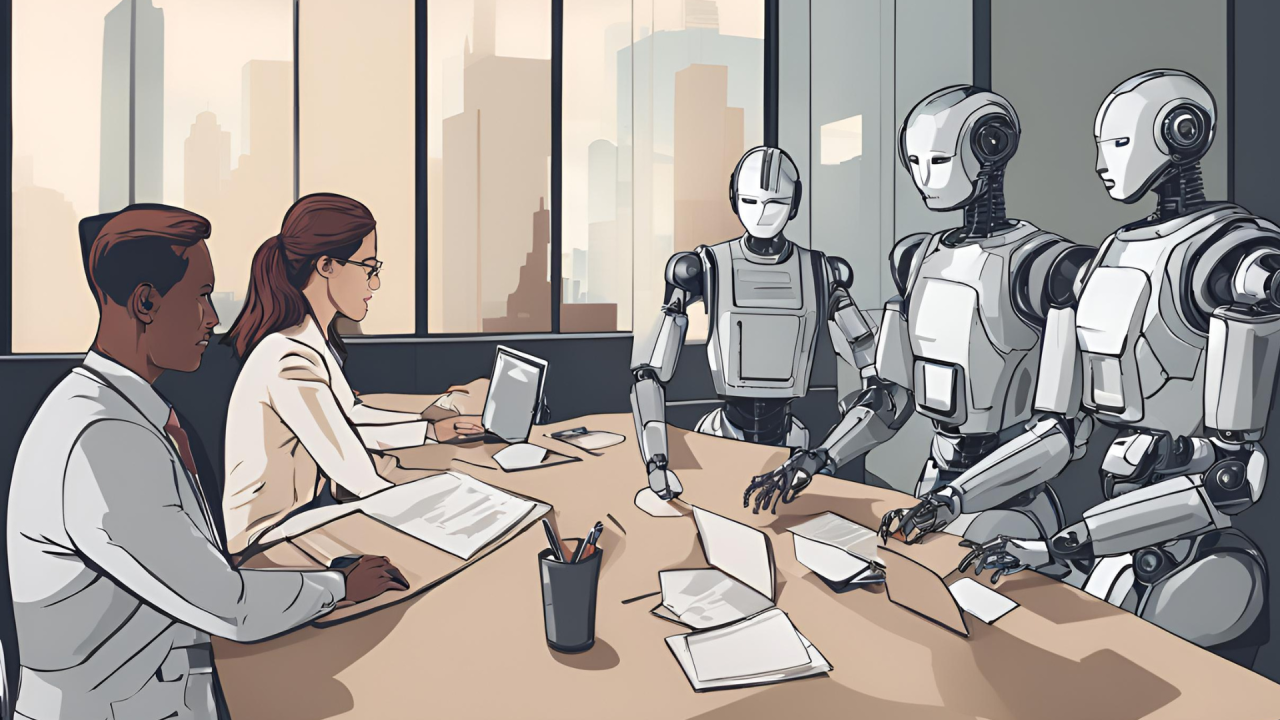
“I’d like to introduce you to our newest team member – they’re available 24/7, never take holidays, and can handle multiple tasks simultaneously.”
No, this isn’t the start of a Black Mirror episode. It’s the promise of AI Employees, the latest buzzword taking over tech discussions. While the idea of a fully virtual workforce might sound like science fiction, there are some fascinating (and actually practical) developments happening in this space.
What Are We Really Talking About Here?
Let’s cut through the hype and break down the buzzwords.
AI Agents are like specialised workers who focus on specific tasks (typically one agent = one job). Think of them as AI programs running in continuous loops, connected to your existing software tools. They can:
- Monitor your email and draft responses
- Keep your CRM updated with fresh research
- Track competitors and summarise changes
- Generate and schedule social media content
- Process and categorise documents
- Provide coaching feedback on your meetings
AI Employees are more sophisticated virtual workers that can handle broader responsibilities. Unlike specialised agents, they can:
- Understand and execute complex instructions
- Work across multiple domains and tools
- Maintain context about your business and preferences
- Handle more nuanced decision-making
- Communicate naturally about their work and progress
AI Employees don’t truly exist yet, but AI Agents are getting more sophisticated every day. And it’s now possible to have one agent coordinate other agents (think of a team leader coordinating the members of the team). In time, it’s conceivable that we’ll have ‘AI Employees’ that handle basic roles for us.
Tools Making This Possible
Platforms like Lindy.ai are making it easier to create your own AI agents without deep technical expertise. They provide:
- Pre-built templates for common business processes
- Connections to popular business tools
- Safety controls and monitoring
- The ability to customise agent behavior
It’s similar to Zapier, but with AI agents performing tasks on your data instead of just piping it to another system.
The Catch (Because There’s Always a Catch)
Before you start planning your all-AI department, there are some important considerations:
Security Risks:
- These agents need access to your systems and data
- They’re not 100% reliable yet
- Output quality can vary
- They might make unexpected decisions
Best Practices:
- Start with non-critical processes
- Implement clear monitoring systems
- Keep humans in the loop for important decisions
- Regular audits of agent activities
- Clear documentation of what each agent can access
What’s Next?
While we’re not quite at the point of having fully autonomous AI Employees, the technology for creating specialised AI agents is here and usable. The key is starting small, being strategic about what you automate, and maintaining appropriate oversight.
As these tools become more sophisticated, we’ll likely see:
- Better integration between different agents
- More natural interfaces for managing them
- Improved reliability and safety features
- Ability to handle more complex tasks
- Specialised agents for specific industries
What do you think? Could your business benefit from some AI team members? What tasks would you trust to an AI agent?
Until next time!



